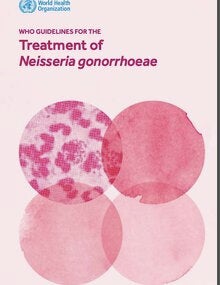Rationale for the guidelines
Since the publication of the WHO Guidelines for the management of sexually transmitted infections in 2003, changes in the epidemiology of STIs and advancements in prevention, diagnosis and treatment necessitate changes in STI management. There is an urgent need to update treatment recommendations for gonococcal infections to respond to changing antimicrobial resistance (AMR) patterns of N. gonorrhoeae. High-level resistance to previously recommended quinolones is widespread and decreased susceptibility to the extended-spectrum (third-generation) cephalosporins, another recommended first-line treatment in the 2003 guidelines, is increasing and several countries have reported treatment failures.
These guidelines for the treatment of common infections caused by N. gonorrhoeae form one of several modules of guidelines for specific STIs. Other modules will focus on treatments for Chlamydia trachomatis (chlamydia), herpes simplex virus type 2 (HSV-2; genital herpes) and Treponema pallidum (syphilis). In addition, future work will provide guidance for syphilis screening and treatment of pregnant women, STI syndromic approach, clinical management, STI prevention, and treatments for other STIs. It is strongly recommended that countries take updated global guidance into account as they establish standardized national protocols, adapting this guidance to the local epidemiological situation and antimicrobial susceptibility data.
Objectives
The objectives of these guidelines are:
- to provide evidence-based guidance on treatment of infection with N. gonorrhoeae; and
- to support countries to update their national guidelines for treatment of gonococcal infection.
|

